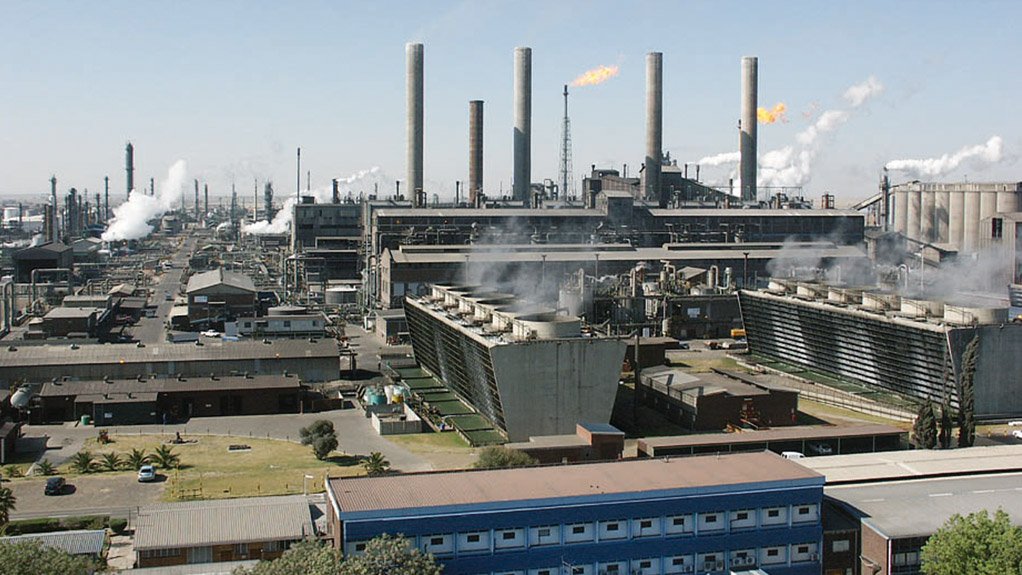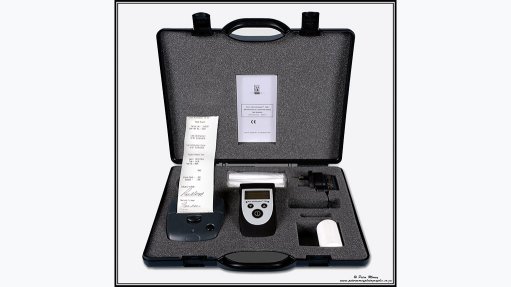Sasol improves volumes, predicts strong 2016 output



BOOSTING ELEMENTS Sasol’s group-wide operational performance resulted from increased sales volumes, significant cost savings contribution and resilient gross margins
Photo by Sasol
ESTIMATED CONTRIBUTION Sasol group’s cost and cash savings initiatives continue to deliver, with the response plan cash flow estimated to contribute several billion rand in 2016
Photo by Sasol
Despite a highly volatile and uncertain macroeconomic environment, exacerbated by lower global oil prices, integrated energy and chemicals company Sasol has registered a strong operational and cost performance for the 2015 financial year.
The company released its full-year results for the year ended June 30 last month and reported that the groupwide operational performance was a result of increased sales volumes, significant cost savings contributions across the integrated value chain, lower costs and resilient gross margins. This was further coupled with improved margins in the chemicals business.
“Profit from operations of R46.5-billion increased by 2%,” said Sasol CFO Bongani Nqwababa, adding that profit from operations benefited positively from one-off items of R14.7-billion.
“This was driven largely by macroeconomic factors, changes to the share prices, and increasing the useful life of [Sasol’s] Secunda and Sasolburg operations to 2050 and 2034 respectively by securing feedstock,” he added.
Earnings increased to R29.7-billion from R29.6-billion in 2014 and, while headline earnings per share decreased by 17% to R49.76, earnings per share increased by 0.3% to R48.71, compared with 2013.
Nqwababa acknowledged that the group’s profitability was adversely impacted on by a 33% decline in average Brent crude oil prices. The average dated Brent correct was $73.46/bl for the year ended June 30, compared with $109.40/bl in the prior year.
This decline was partly offset by a 10% weaker average rand:dollar exchange rate, which was R11.45/$ for the year ended June 30, compared with R10.39/$ in 2014.
Energy and Chemicals
Nqwababa emphasised that Sasol maintained a strong operational performance across its global integrated value chain in 2015.
The group’s energy business in Southern Africa increased its liquid fuel sales volumes by 5% to 61.5-million barrels a year, compared with the volumes of the prior year, while the chemicals business delivered “an exceptional performance”, having consistently reported increased sales volumes over the past two years, he averred.
Internationally, the group’s Oryx gas-to-liquids (GTL) facility, in Qatar, delivered a solid performance, with an average utilisation rate of 90% for the year, in line with market guidance provided. This performance was despite an earlier-than- planned shutdown from December 2014 to January 2015.
Nqwababa further noted that, underpinned by solid production, the energy business delivered commendable results “relative to the macroeconomic environment”.
Secunda Synfuels increased liquid fuels production by 2%, while inland crude refinery Natref increased production by 6%.
Meanwhile, Nqwababa pointed out that Sasol’s Southern Africa energy portfolio was also positively impacted on by a 5% increase in liquid sales volume and higher refining margins on the back of strong product differentials.
Further, the company’s chemicals businesses continued to display resilience to the lower oil price, with the base chemicals strategic business unit (SBU) increasing its operational profits to R10.2-billion. Sales volumes increased by 2%, while the business also profited from the extension of the useful lives of assets in South Africa, Nqwababa said.
“The performance chemicals SBU recorded another strong performance, underpinned by consistent and reliable operational delivery and a weaker rand,” he added, pointing out that profit from operations increased by 7% to R12.7-billion, while operating margins expanded to 18%.
Meanwhile, sales volumes increased by 2%, owing to improved production output and higher demand.
Additionally, the US business benefited from low ethane prices, with a contribution that amounted to R4.2-billion, compared with R4.1-billion in the 2014 financial year.
Meanwhile, the European operations reported a 3% improvement in production volumes.
Performance Forecast
As Sasol expects ongoing ‘lower-for-longer’ oil prices and exchange rate volatility, Nqwababa stressed that the group would continue to focus on factors within its control, which include safety, volume growth, margin improvement, cost reduction, capital portfolio prioritisation and on-time, on-schedule project execution.
Nevertheless, he said Sasol expected an overall strong production performance for the 2016 financial year.
“This . . . expectation will include liquid fuels product volumes for the energy SBU in Southern Africa to be above 60-million barrels. Sasol further expects the average use rate at the Oryx GTL plant to be above 87% nameplate capacity, despite an upcoming statutory shutdown.
Chemicals sales volumes are expected to continue to improve and be slightly higher than what they were in 2014. However, Nqwababa acknowledged that, with margins in base chemicals under pressure, the group expected varied margins for the different product streams.
The group further anticipated average Brent crude oil prices to remain between $50/bl and $60/bl during the next financial year, with cash fixed costs to be below the South African producers’ price index. This took into account the R4-billion cash cost savings, as a result of the Business Performance Enhancement Programme, with an exit run rate of at least R4.3-billion by the end of the 2016 financial year, explained Nqwababa.
Meanwhile, Sasol predicted capital expenditure of R70-billion in 2016 and R65-billion in 2017, as it continues to execute its 2012 growth plan and strategy.
Nqwababa added that the group’s cost and cash savings initiatives continued to deliver, with the response plan cash flow estimated to contribute between R10-billion and R16-billion in 2016.
He noted that Sasol expected its balance sheet increase to be between 15% and 30%, thereby maintaining operations and performance momentum.
Article Enquiry
Email Article
Save Article
Feedback
To advertise email advertising@creamermedia.co.za or click here
Comments
Press Office
Announcements
What's On
Subscribe to improve your user experience...
Option 1 (equivalent of R125 a month):
Receive a weekly copy of Creamer Media's Engineering News & Mining Weekly magazine
(print copy for those in South Africa and e-magazine for those outside of South Africa)
Receive daily email newsletters
Access to full search results
Access archive of magazine back copies
Access to Projects in Progress
Access to ONE Research Report of your choice in PDF format
Option 2 (equivalent of R375 a month):
All benefits from Option 1
PLUS
Access to Creamer Media's Research Channel Africa for ALL Research Reports, in PDF format, on various industrial and mining sectors
including Electricity; Water; Energy Transition; Hydrogen; Roads, Rail and Ports; Coal; Gold; Platinum; Battery Metals; etc.
Already a subscriber?
Forgotten your password?
Receive weekly copy of Creamer Media's Engineering News & Mining Weekly magazine (print copy for those in South Africa and e-magazine for those outside of South Africa)
➕
Recieve daily email newsletters
➕
Access to full search results
➕
Access archive of magazine back copies
➕
Access to Projects in Progress
➕
Access to ONE Research Report of your choice in PDF format
RESEARCH CHANNEL AFRICA
R4500 (equivalent of R375 a month)
SUBSCRIBEAll benefits from Option 1
➕
Access to Creamer Media's Research Channel Africa for ALL Research Reports on various industrial and mining sectors, in PDF format, including on:
Electricity
➕
Water
➕
Energy Transition
➕
Hydrogen
➕
Roads, Rail and Ports
➕
Coal
➕
Gold
➕
Platinum
➕
Battery Metals
➕
etc.
Receive all benefits from Option 1 or Option 2 delivered to numerous people at your company
➕
Multiple User names and Passwords for simultaneous log-ins
➕
Intranet integration access to all in your organisation




















